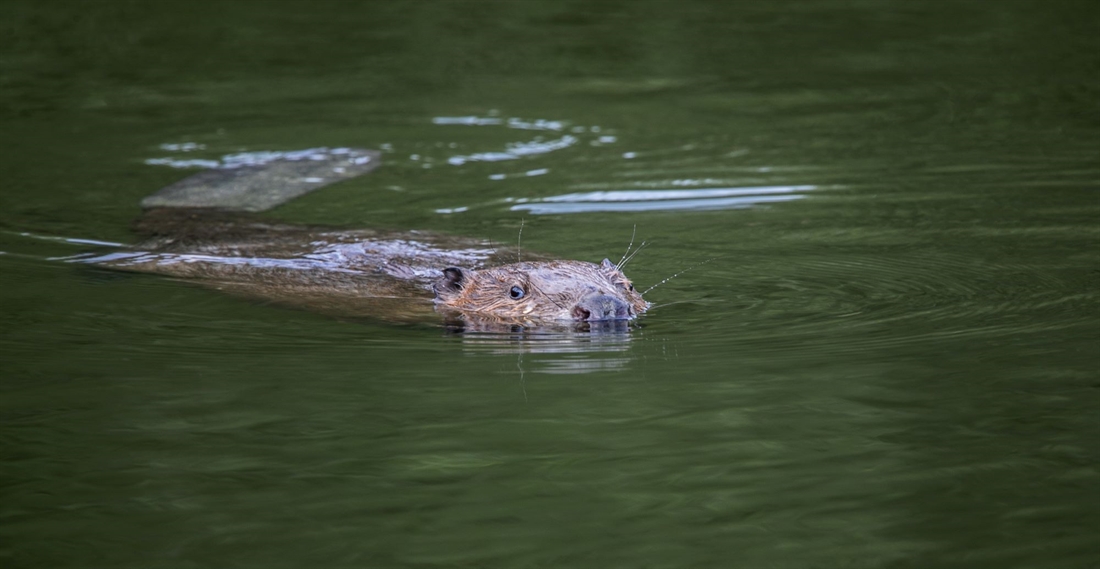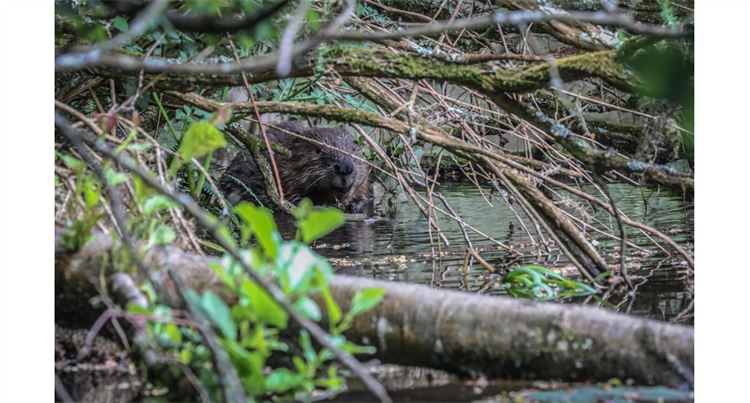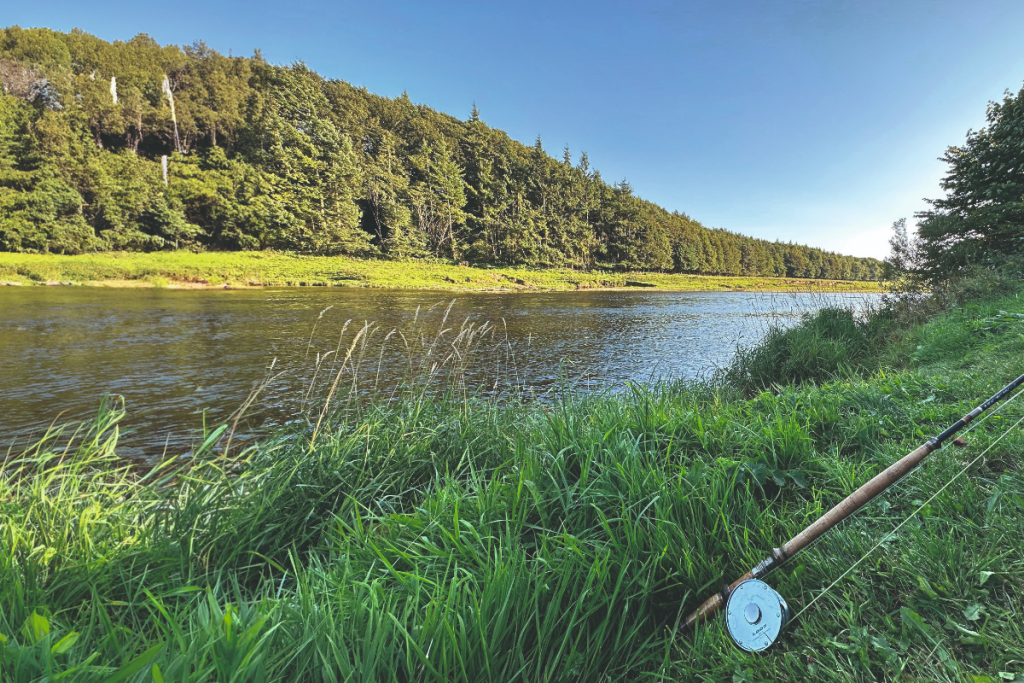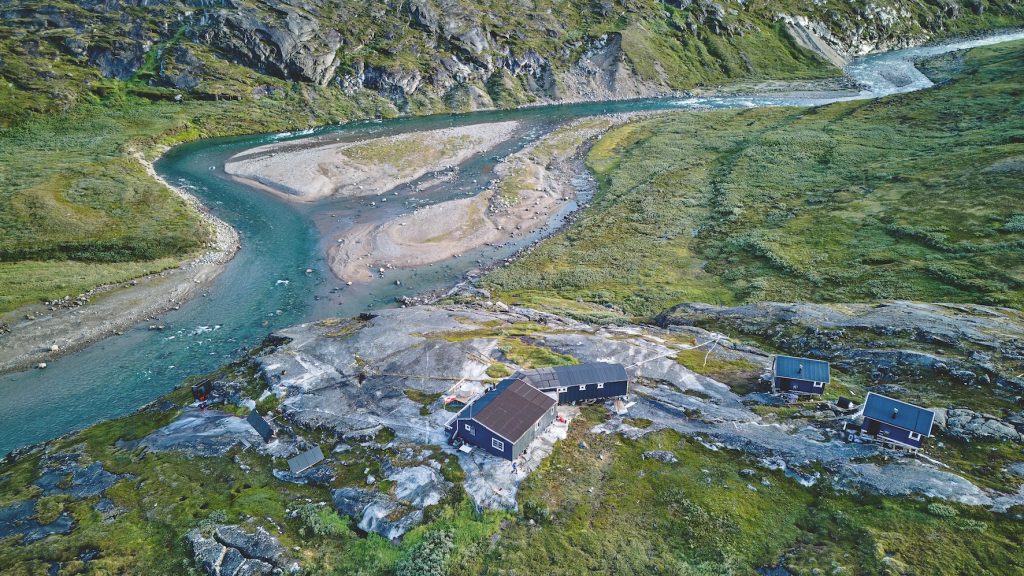Restoring rivers naturally
James Wallace, CEO of Beaver Trust, wants the humble beaver to be treated as an ally in our river crisis.

I am the grandson of farmers twice over. I learned to shoot and fish in local Berkshire woods and the Rivers Kennet and Pang. I have always loved water, fish and birds and now run Beaver Trust, a nature restoration charity. The thrill of catching three sea bass on one line last summer while not capsizing my kayak and watching a flock of choughs will live with me forever.
Much of Britain’s wildlife is on the verge of extinction, so why should I care so much about the plight of one particular species like Salmo trutta, our native brown trout, or a pastime that involves killing, like fishing? The answer is simple. Hunting is as intrinsic to our humanity as our dance with nature should be mutually beneficial. Our deep connection with wild places and wildlife comes from necessity. We are nature, red in tooth and claw, and I believe a reciprocal relationship with wildness will sustain us, and it.
There are some pretty sobering facts for us lovers of gin-clear waterways and an early rise. Britain is the most nature-depleted nation in Europe – 50% of wildlife is declining including our anadromous and potamodromous fish and resident and migratory wetland birds. 86% of England’s 200,000km of rivers are in poor ecological condition; all monitored rivers are polluted by chemicals, slurry or sewage. Many chalk streams are over-abstracted and in drought, with parts of the Chiltern’s annual flow at 25% of normal. Water shortages in the south soar along with record temperatures annually, while the cost of flooding in 2015 alone was £5bn. 39% of rivers are affected by modifications like concrete dams and weirs and 22% of our potable water is lost through leakage, wasting 3bn litres per day. It will cost £44bn to update our sewage systems over 30 years.
Wildlife needs three key things: habitat, food and water. But there is little room for meandering wildlife corridors and scruffy biodiverse scrub when the EU’s CAP farm payment system’s goal is productivity and reward is subsidy. Shifting Baseline Syndrome forgets the abundant wildlife of past generations. Ecological Tidiness Disorder mows and flails life into straight lines. My newlywed farming and fly fishing grandparents living just 80 years ago wouldn’t recognise their farms or streams today.
Government agencies are failing to protect our waterways and riparian habitats. Between 2009-2019, there were 28% fewer water pollution samples and 44% fewer waste crime prosecutions. Whether a water company or agri-business, one can literally defecate en masse in our waterways with impunity. Modern day policy and economics are at odds with the need to restore and conserve the water, land and wildlife that sustain us. Restoring our rivers, fish and wildfowl is well within our grasp. We just need to give unpolluted and uncontested space for wildlife and habitats to flourish and make it viable for those blessed with the often thankless task of stewarding our land and water. A groundswell of inspirational and influential regenerative farmers, riverkeepers and conservationists are on a mission to heal the damage using low-cost natural solutions. Perhaps surprisingly, this includes the help of another busy decision-maker: the disruptive beaver.
As a student archaeologist, no one told me that beavers lived across Britain, advancing and retreating with humans and the ice eight times over 850,000 years. Imagine my surprise while excavating the Olympic Rowing Lake at Dorney in 1994 when I discovered a 4,000-year old Bronze Age beaver dam and its buck-toothed skeletal resident rodent. As Professor Bryony Coles reminds us in ‘Beavers in Britain’s Past’ (2006), the 20-30kg herbivorous beaver created the rich landscapes within which human society developed. My prized Acheulean stone handaxe, found by an elderly friend in her Thames Valley rosebed, was deposited by her somewhat hairier ancestor chasing an aurochs for supper across a beaver wetland 500,000 years ago. The humble beaver is an ecosystem engineer. For millennia, beavers were a force of nature, the architects and regulators of our waterways and valleys. They showed us how to make dams, weirs and canals that move and regulate water courses, levels and flows. They demonstrated how to tame the land, build homes, secure clean water and abundant food. Our domed houses and burial mounds mimicked the mud, stick and stone lodges of beavers. Their dams formed ponds stocked with fish and game and their meadows provided fertile space for agriculture. Beaver-coppiced groves provided fresh forage and building materials for beavers and us, techniques mimicked in hedgerows for land enclosures and modern woodland management.
Research conducted over decades across the Northern hemisphere shows that beavers controlled floods, abated drought, sequestered carbon, purified water and provided the habitats and food wildlife and people need; attributes that could come in handy today in our rapidly changing environment and climate.
We used the same wetland engineering and management but to the opposite effect: we drained the land and constrained streams to the deeply incised, straightened and dredged waterways littering Britain today. We rush water to the sea, washing away soil, slurry, chemicals, sewage and habitats. No-longer the mosaic waterways of braided channels, ponds, riffles, water meadows and woodland clearings, and no-longer the larders and refugia of our aquatic and riparian species.
Wetlands are the most biodiverse self-regulating habitats on Earth. British wildlife depends as much upon these long-departed places as 400 years ago when beavers were hunted to extinction. Their fur and castoreum oils made fashionable hats and perfume, traded by the Hudson’s Bay Company and funded the British Empire expansion across North America. When next strolling past 105 Oxford Street, tip your felt hat to the beaver statues atop Henry Heath’s Beaver Hat Factory.
My first experience of a beaver wetland at the Cornwall Beaver Project was like stepping back through time to the buzzing, primordial soup of untamed wilderness of neophyte human civilisation. The sight, sounds and smells smack you in the senses, offering a tantalising glimpse of what once was and could be. This symphony of wildlife – from dragonflies and teal to brown trout and eels – co-evolved with beavers in the wetlands they created.
A recent scientific review of beaver wetlands (Larsen et al., 2020) shows beavers slow the flow of water, sediment falls, nutrients and temperature rise, algae and protozoa grow which feed invertebrates, which feed small fish, eels, amphibians, birds, mammals, which feed bigger versions of the same. Beaver-managed ponds and streams provide habitats catering for every stage of their lifecycle from riffles and shallow gravel beds waiting for salmonids to fan their redds, to slow, deep ponds full of deadwood, food and sanctuary for juveniles and their elder relatives alike.
I wonder if these properties unknowingly informed our remarkably similar contemporary river restoration practices where Catchment Partnerships and Rivers Trust volunteers install leaky dams (aka natural flood management) and lots of woody debris, soften edges and re-wiggle channels across the floodplain.
But what about the impact of beaver dams on fish migration? A 2012 review led by Professor Paul Kemp of University of Southampton, considered 35 species of fish and found “The majority of 49 North American and European experts considered beaver to have an overall positive impact on fish populations, through their influence on abundance and productivity”.
Paul told me recently, “Based on our telemetry study conducted in Scotland, tagged brown trout are able to pass beaver dams in both the upstream and downstream direction under most conditions. However, under periods of extremely low flow, the dams did impede their upstream movements. It is really important to understand that the responses are likely to be context dependent, and the river’s ability to respond to beaver modification, e.g. in relation to reconnecting with the floodplain. Responses will be very different for highly managed/engineered rivers that are less able to respond. Overall, we found that the increase in diversity of beaver habitat was beneficial for trout, accommodating a wider range of life-stages, and providing refuge from predators during the winter months”.
If rivers are allowed to flow naturally then beaver dams rarely present a barrier to fish, and the wetland habitats, food and water beavers create will help river and fish restoration. Welcoming back a dam-building rodent may seem counterintuitive when removing thousands of human-made obstructions but concrete and organic dams are worlds apart. If rivers are allowed to expand beyond their current constraints then fish passes will naturally form around beaver dams.
Many anglers agree. Fishinguide founder Duncan Pepper speaks about beaver dams in a new film made by Beaver Trust (‘Beavers Without Borders’): “It’s not a worry. 70% of the world’s Atlantic salmon spawn in Norway. Of their top 10 salmon rivers seven of them have beaver and six of them are at capacity of beaver. The Latin name for salmon is Salmo salar. Salar means leaper. They are well known for getting past stuff, whether it’s a big waterfall or beaver dam. I’ve fished the River Tay before there were beavers here and I’ve fished the lochs of Argyll where the beavers were reintroduced. There is no doubt in my mind there are more fish where there are beavers.”
Research from Professor Dunan Halley of NINA this year shows “Beaver dams did not block the movement of juvenile salmonids or their ability to use upstream habitats.” After 25 years of beaver research in east Norway, where the country is similar to much of England, he has witnessed Atlantic salmon and beaver populations recovering simultaneously. Norwegian anglers are not concerned by beavers and treat them as a normal part of their fauna. Beavers are managed, and where necessary, are culled or hunted. The same approach works across Europe.
However, at a Beaver Trust event last September at Englefield Estate for Defra, Natural England, Environment Agency, NFU, GWCT, RSPB, National Trust and others, Professor Iain Cowx of University of Hull shared his preliminary review findings commissioned by the Angling Trust. He raised concerns about a lack of evidence on the likely impacts of beavers returning to Britain’s modernised and managed rivers.
Beavers have been on trial for 19 years in England. 13 years ago, Natural England concluded it is feasible for beavers to return to England, as many benefits could be seen and issues can be managed. But beavers are not yet recognised as a native species, and so have no appropriate safeguarding or management framework.
The research I have reviewed should reassure me as an angler and naturalist. However, our heavily managed rivers and landscapes have changed since beavers were last here.
While beavers in lower order streams can benefit wildlife and people, they can disrupt other users of the land. Beavers eat trees, spuds and maize, flood parts of fields, block drains and in some cases can impede fish passage. All of these issues can be resolved locally and at minimal cost – with tree guards, notching/removing dams, translocation, even lethal control – tried and tested methods used by professionals from Dr Roisin-Campbell Palmer in Scotland to Gerhard Schwab in Germany, and reflected in their national government policies and management plans.
In August 2020, I wrote on behalf of Beaver Trust and 40 organisations (from the CLA to Wildfowl and Wetlands Trust) to ask Secretary of State George Eustice to collaborate with us on an English Beaver Strategy. We suggested licensed beaver releases should mitigate risk and maximise benefits, with sufficient consultation, habitat suitability assessment, funding, local management support and on-going monitoring.
On 6 August 2020 in a BBC interview Environment Minister Rebecca Pow said of the wild beavers being allowed to remain on the River Otter, that in the future beavers could be considered a “public good” and farmers and landowners would be paid to have them on their land.
Since the first lockdown in March 2020, I have listened to and convened interest groups from landowners and farmers to anglers and conservationists. We don’t agree on everything but do agree the need to allow rivers space to breathe across the valley and restore more naturally. Perhaps paying landmangers for river buffers is part of the answer?
Feargal Sharkey, renowned river advocate and ex-frontman of the Undertones has joined forces with Defra Director Ben Goldsmith, Richard Benyon of Englefield Estate and me from Beaver Trust to gather a group of influential leaders across landowning, fisheries, conservation, farming and forestry groups. Together we are asking government ministers for legislation and funding that will incentivise land and water managers to create buffers along England’s rivers and streams where cultivation and chemicals will be pushed back by 20m or more from the bank and natural processes and wildlife will be restored, reducing soil loss and slurry run-off.
Defra is already considering funding incentives like ‘conservation covenants’ where farmers are paid to set aside buffers using the Nature for Climate Fund with periodic payments under the new Environmental Land Management scheme (ELMs), integrated with catchment planning and new initiatives like the England Tree Strategy.
In time and with the right management and support, beavers could help us restore river systems that help regulate floods and droughts, sequester carbon, purify water and provide the habitats and food for recovering wildlife across Britain. Beavers are not a magical elixir for human-made problems but could once again be treated as an ally in our river crisis. As Denise Ashton of the Wild Trout Trust said recently to me “The question is not whether beavers are fit for our rivers but how can our rivers become fit for beavers?”
Come and visit Beaver Trust’s beaver wetland site in Cornwall to find out more, and pack your rod.
Related Articles
Get the latest news delivered direct to your door
Subscribe to Fieldsports Journal
Elevate your experience in the field with a subscription to Fieldsports Journal, the premium publication for passionate country sports enthusiasts. This bi-monthly journal delivers unparalleled coverage of game shooting, fishing and big game across the UK and beyond.
Each issue offers a stunning collection of in-depth features, expert opinions and world-class photography, all presented in a timeless yet contemporary design.
Save 10% on shop price when you subscribe, with a choice of packages that work for you. Choose from Print & Digital or Digital only with each journal delivered directly to your door or via the app every other month, plus access to past issues with the digital back issue library.









